
Logout
If you want to log out click in LogOut


AnyGenes® helps you to analyse your favorite signaling pathways (SignArrays®) in less than 2 hours at very competitive prices.
Since more than 15 years, AnyGenes® team is proud to offer you a large panel of signaling pathways or gene expression assays that you can easily custom to your project needs. Our SignArrays® are widely used by scientific community and are mentioned by high impact factor scientific publications, with positive feedbacks for the efficiency of our products. Indeed, AnyGenes® SignArrays® help in reducing time to get reliable qPCR array results, and accelerating publications rate.
AnyGenes® has successfully created and enhanced the SignArrays® system, accompanied by their Perfect Master Mix SYBR® Green reagent. This ensures accurate, dependable, and consistent results. These tools are effective in examining various signaling pathways, even when working with limited and valuable samples, such as FFPE or LCM samples.
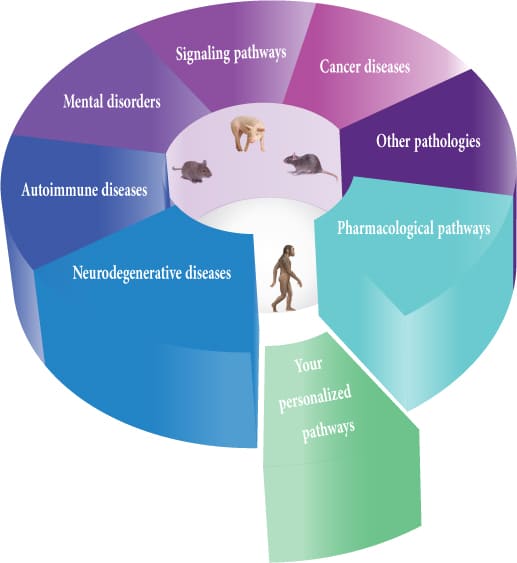
All our signaling pathways are validated at the experimental level on a large collection of tissues and cell lines on our high-throughput molecular platform, thanks to stringent and strong quality control criteria to guarantee you the best results.
We propose you a whole range of SignArrays® at the 96 or 384 plate format, compatible with most of all qPCR instruments on the market.
Each SignArray® 96 allows to analyse 84 genes of interest, specific to a signaling or pathological pathway with 8 reference genes necessary to the robust normalisation step of your qPCR data and 4 quality controls.
Available for many species : Homo sapiens, Mus musculus, Rattus norvegicus, Sus scrofa and more on demand!


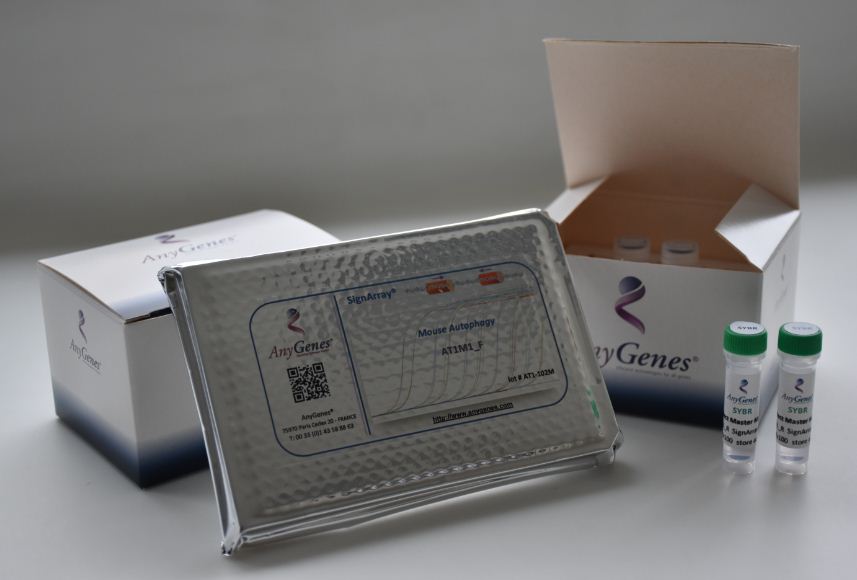
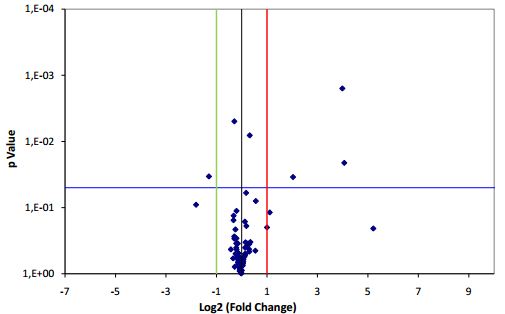
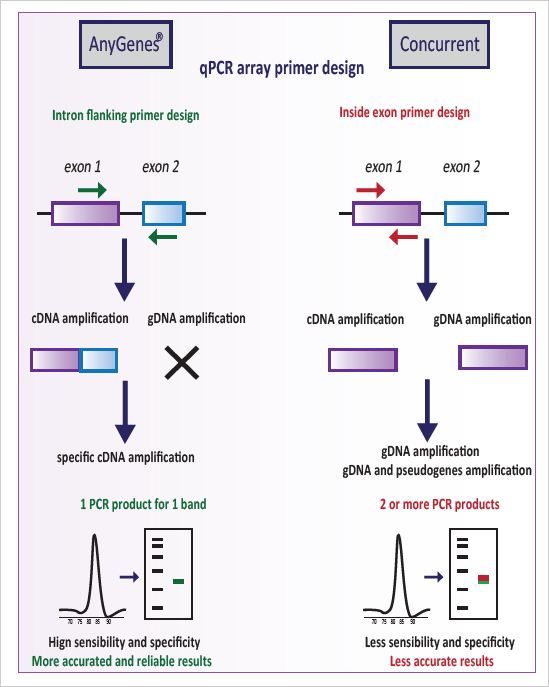
Your signaling pathway SignArrays® results in less than 2 hours !
AnyGenes® has standardised its signaling pathways SignArrays® protocols to let you perform your qPCR analysis in the easiest way.
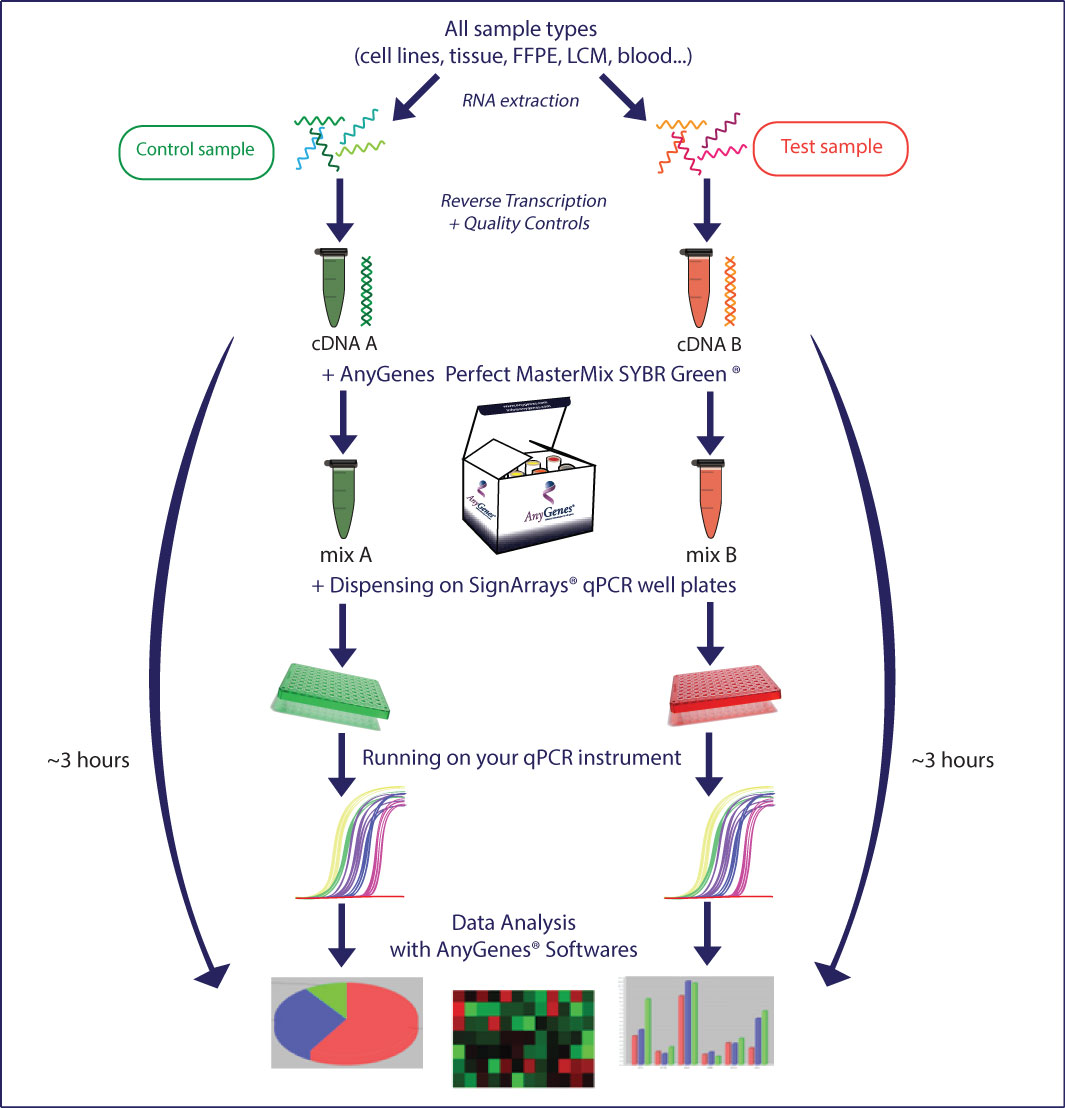
Your signaling pathways SignArrays® are perfect for many applications:
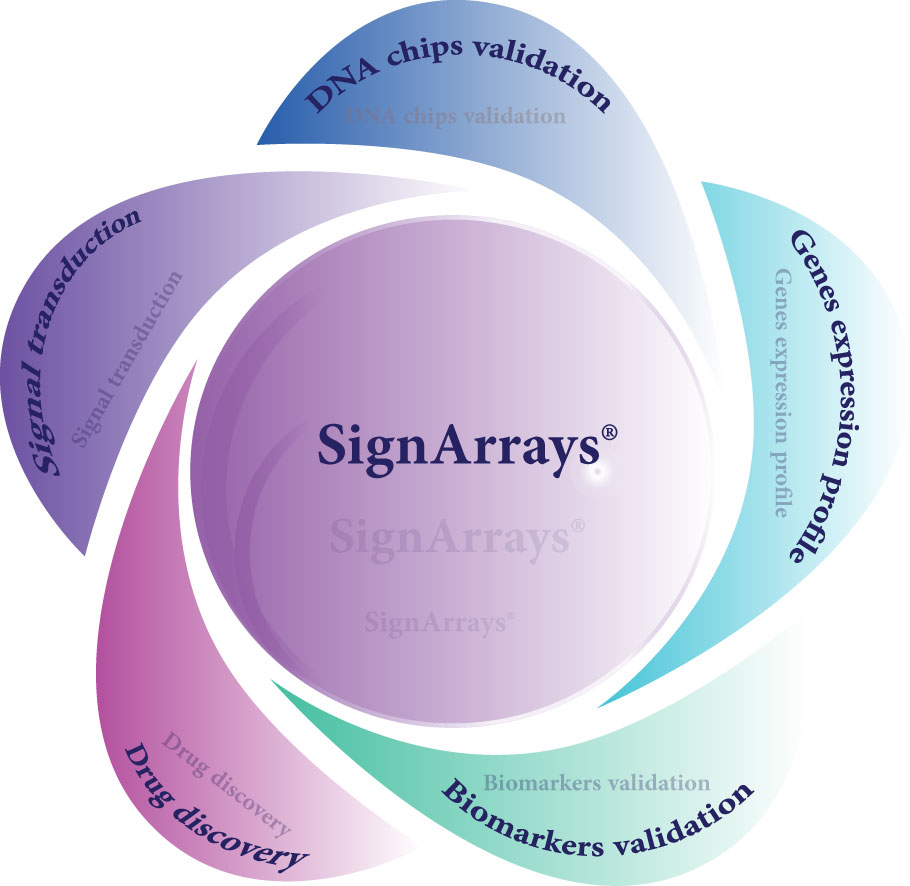
As AnyGenes® policy is to propose you complete solutions at the closest of your scientific issues, you can custom your own SignArrays® with the genes of interest of your choice, according to your project.
You just have to download and complete our Personalized SignArrays® information file and send it at [email protected]
Standard SignArrays® 96 system prices
| Reference type : XXX1H1-Y* | |
| Standard | |
| Number of SignArrays® 96 | Price/unit (before TAX) |
|---|---|
* Y: R, A, B or F plate type, according to the qPCR instrument
(see Compatibility file)Customizable SignArrays® 96 system prices
| Reference type : PZXH1-Y* | |
| Customizable | |
| Number of SignArrays® 96 | Price/unit (before TAX) |
|---|---|
* Y: R, A, B or F plate type, according to the qPCR instrument
(see Compatibility file)PMS Reagents associated with SignArrays® 96 prices
| Reference type : PMS1-Z* | |
| PMS Perfect Master Mix SYBR® Green SignArrays® 96* | |
| Number of SignArrays® 96 | Price/unit (before TAX) |
|---|---|
* 10 μl of PMS/reaction for 20 μl final volume
* Z: W, R, LR or F PMS, according to the qPCR instrument (see Compatibility file)
Standard SignArrays® 384 system prices
| Reference type : XXX1H2-Y* | |
| Standard | |
| Number of SignArrays® 384 | Price/unit (before TAX) |
|---|---|
* Y: R, A, B or F plate type, according to the qPCR instrument (cf Compatibility file)
(see Compatibility file)Customizable SignArrays® 384 system prices
| Reference type : PZXH2-Y* | |
| Customizable | |
| Number of SignArrays® 384 | Price/unit (before TAX) |
|---|---|
* Y: R, A, B or F plate type, according to the qPCR instrument (cf Compatibility file)
PMS Reagents associated with SignArrays® 384 prices
| Reference type : PMS2-Z* | |
| PMS (Perfect Master Mix SYBR® Green) SignArrays® 384* | |
| Number of SignArrays® 384 | Price/unit (before TAX) |
|---|---|
* 10 μl of PMS/reaction for 10 μl final volume
* Z: W, R, LR or F PMS, according to the qPCR instrument (cf Compatibility file)
For more information on prices, please contact us at [email protected]
These prices are available only in FRANCE, please contact your local distributors of your country
Signaling Pathways |